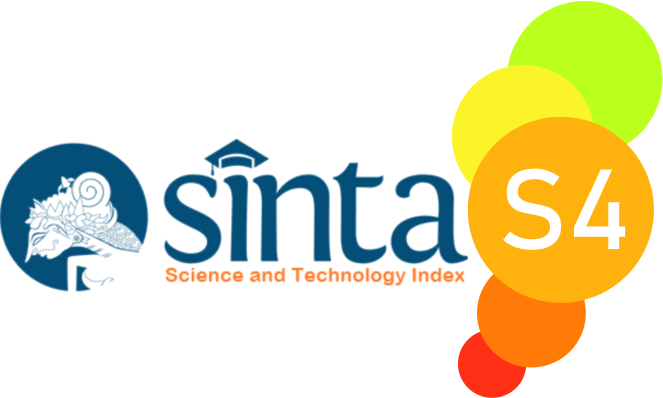Teaching English to Students with Autism Spectrum Disorder (ASD)
Abstract
Students with autism spectrum disorder (ASD) typically show a unique pattern in their language learning. This fact has been documented in a number of earlier investigations. However, it was discovered that Indonesian teachers and educational institutions were insufficiently prepared to fulfill the needs of their students, both in terms of teaching strategies and the material development. This study then aimed at examining appropriate strategies of teaching English to ASD students as well as finding out the challenges faced by teacher in teaching English in the classroom. The research design of this study was case study research with qualitative approach. The participant of this study was English teacher at SLBN 01 Lombok Timur chosen using purposive sampling. The researchers used documentation, in-depth interviews, and observation to acquire data. The results revealed that the teacher faced some challenges in teaching ASD students, such as lack of focus and concentration during teaching and learning process and speech delay. To address these issues, the teacher and school principle used some strategies to teach children with autism, namely developing oral language comprehension and developing lesson plan with visual media to help the student learn English as a foreign language
References
Budiyanto, B., Sheehy, K., Kaye, H., & Rofiah, K. (2020). Indonesian educators’ knowledge and beliefs about teaching children with autism. Athens Journal of Education, 7(1), 77–98. https://doi.org/10.30958/aje.7-1-4
Cordeiro, M. L. B., Lima, N. G. de H., Oliveira, M. A. de, Pereira, M. S., Guimarães, L. da S., & Cintra, G. A. (2022). Teaching Practice with Autistic Children: Challenges and Possibilities. European Journal of Education and Pedagogy, 3(3), 183–190. https://doi.org/10.24018/ejedu.2022.3.3.360
Findley, J. A., Ruble, L. A., & Mcgrew, J. H. (n.d.). No Title. 35(2020), 47–54.
Ghedeir Brahim, M. (2022). Teaching English to Students with Autism Spectrum Disorders: Challenges and Teaching Strategies. English Studies at NBU, 8(2), 203–214. https://doi.org/10.33919/esnbu.22.2.3
Herna. (2022). Pemanfaatan Komunitas Virtual dalam Komunikasi Pembangunan. Jurnal Inovasi Penelitian, 3, No.1.
Maghfirah Ramadhani, Syamsul Bahri, T. M. S. (2019). Teacher’s Problems in Dealing with Autism Children in Learning Process. Research in English and Education, 4(2), 74–79.
Maulidiyah, A., Thamrin, N., & Oktoma, E. (2023). An Autistic Student’s Language Learning Strategies in Writing Poem. Journey: Journal of English Language and Pedagogy, 6(2), 440-447. https://doi.org/10.33503/journey.v6i2.3195
Mufidah, N. (2024). Journal on English as a Foreign Language Exploring influential factors and strategies for addressing speech delay of a child with autism spectrum disorder ( ASD ) in English ( L2 ) language acquisition. 14(1), 73–96.
Nugraheni, S. A. (2012). Menguak Belantara Autisme. 20, 9–17.
Padmadewi, N. N., & Artini, L. P. (2017). Teaching english to a student with autism spectrum disorder in regular classroom in Indonesia. International Journal of Instruction, 10(3), 159–176. https://doi.org/10.12973/iji.2017.10311a
Roitsch, J., Moore, R. L., & Horn, A. L. (2021). Lessons learned : what the COVID-19 global pandemic has taught us about teaching , technology , and students with autism spectrum disorder. 15(2), 108–116. https://doi.org/10.1108/JET-12-2020-0053
Romadlon, F. N. G. (2017). PROMOTING_ENGLISH_VOCABULARY_FOR_AUTISTIC_STUDENTS.pdf.
Ruslin, Mashuri, S., Rasak, Muhammad Sarib Abdul Alhabsyi, F., & Syam, H. (2022). Semi-structured Interview: A Methodological Reflection on the Development of a Qualitative Research Instrument in Educational Studies Ruslin. Journal of Research & Method in Education, 12(1), 22–29. https://doi.org/10.9790/7388-1201052229
Sandra, L. A., & Kurniawati, L. A. (2020). Differentiated Instructions in Teaching English for Students with Autism Spectrum Disorder. Jet Adi Buana, 5(01), 41–53. https://doi.org/10.36456/jet.v5.n01.2020.2274
Sari, D. F., Gea, E. R., & Fajrina, D. (2021). The listening skill of autistic students in learning english through total physical response. Studies in English Language and Education, 8(1), 34–46. https://doi.org/10.24815/siele.v8i1.18131
Savenye, C. W. R. S. (2001). Types of Qualitative Research -1.pdf (p. 1194). The Association for Educational Communications and Technology
Susanti, R. R. D. (2024). How to Improve English vocabulary for Students with Autism? International Journal of Applied Educational Research (IJAER), 2(1), 1–16. https://doi.org/10.59890/ijaer.v2i1.1143
Tongco, M. D. C. (2007). Purposive Sampling as a Tool for Informant Selection. 158, 147–158.
Copyright (c) 2024 Siti Maysuroh, Astrid Dwimaulani, Laila Wati, Nurhayati Nurhayati, Nurul Yusri

This work is licensed under a Creative Commons Attribution-ShareAlike 4.0 International License.

Journey: Journal of English Language and Pedagogy by http://ejurnal.budiutomomalang.ac.id/index.php/journey/index is licensed under a Creative Commons Attribution-ShareAlike 4.0 International License.






